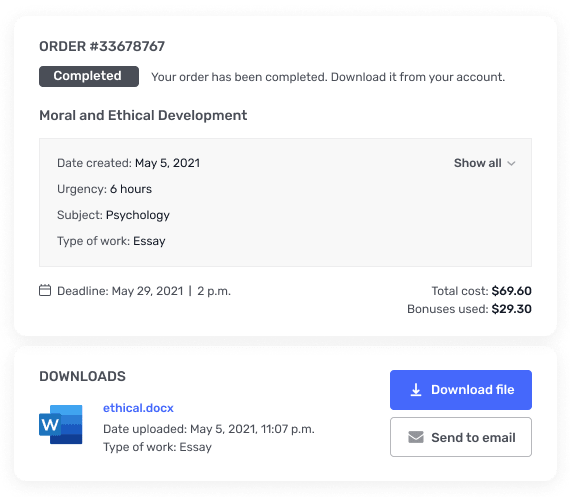Discuss is the concept of job-based pay Job-based
Each reply must be at least 250 words, APA format, and include at least 2 scholarly references.Reply 1The subject that I have chosen to discuss is the concept of job-based pay. Job-based pay is where a person is paid for the jobs that they are performing (Martocchio, 2015). This concept brakes everything down to the job and the value of that job to the organization. This is how the pay level and increases are determined. Promotions are also based on the performance of the job and reaching goals. This provides some advantages such as it helps remove the aspect of gender and race from the determination of pay, and it creates an easy to administer payroll system (Martocchio, 2015). The ease of the payroll system is based on the job performance. If a person reaches this goal, they get an incentive if they complete a project on time they get an incentive (Martocchio, 2015). This type of incentive program does have the downside of ignoring how the goal is reached. If a person reaches a goal but does so in an unethical way, they will still get the incentive. The issue of gender and race discrimination is a big issue in the business world today. Creating a job-based pay system does not remove the issue of gender or race skewing in a particular field (Newman, 2014), but by focusing on the reaching of goals for promotions, incentives, and wage determination the inequality is reduced within the company (Newman, 2014). When the issues of race or gender are removed from the picture, and the focus is placed solely on the job the work environment should become better. The second issue is the ability to motivate employees to reach a goal. It has been shown that pay incentives do not motivate people very well within an organization (Yuan, et al., 2013). This means that all the responsibility of motivation falls on the managers.Reply 2Reasons to adopt a person focused pay program The competitive nature of the global economy and advances in technological innovation have caused many firms to take a new look at how they choose to compensate their employees (Martocchio. 2015, p. 103). This growing trend in global business views compensation of employees as a way to involve them in a process of acquiring and implementing knowledge and skills in job-related activities. The ideas is to involve employee in a development process that allows them to meet the ever evolving and changing demands of skills and knowledge which is a part of the accelerated rate of innovation and the ultra-competitive nature of global competition (Martocchio, 2015, p. 104; Werner & DeSimone, 2012, p. 535). Technological innovation has made some skills obsolete and requires a greatly enhanced need for a more educated workforce (Bohlander, Snell, & Sherman, 2001, p. 8). Things such as telecommunications, robots, software, artificial intelligence, and lasers have changed the operations of many industries. As an example a mechanic in the past needed to know how to adjust the flow of a carburetor but now must deal with the sophisticated functions of a fuel injection system as well as a computerized diagnostic systems (Martocchio, 2015, p. 103). This requires the mechanic to be better educated and understand the job in a much broader perspective. Many jobs have evolved like that of the mechanic. These jobs require greater knowledge and skill sets have changed dramatically in only a few short years. Another example is a position in the manufacturing environment called the technician. This position has shifted dramatically concerning the task and responsibilities needed to perform the daily functions and responsibilities incorporated into the job. A much higher level of abilities is now need to simply perform this job in the area of reading, writing, and computation skills. This position in the past required good hand and eye coordination. The new demands for technicians requires the ability to read and understand manuals as well as the troubleshooting of equipment that is based on automated computerized manufacturing machines. In the past most manufacturing equipment was far simpler and based on mechanical principles (Martocchio, 2015, p. 103: Werner & DeSimone, 2012, p. 235). Increased competition in the global market place has forced firms to increase their productivity and become more competitive. This competitive market place often requires firms to use cutting edge technologies and skills (Bohlander, Snell, & Sherman, 2001, p. 12). Evidence has shown that foreign workers have superior skills and use them to produce higher levels of production in some industries that do their American counterparts. The European Common Market and the Pacific Rim nations emphasize employee development and continual learning (Martocchio, 201, p. 104). By utilizing classes and various forms of instruction employees are better able to respond to strategic change in the market place because these firm are more proactive. These areas of the world also provide employee with superior academic preparation and developmental workplace instruction for individual employees who aren’t interested in obtaining a college education. These areas appear to be better at training vocational skills than their American counterparts. One important difference appears to be that these other areas place a stronger emphasis on applied skills and knowledge rather than on theoretical concepts for vocational training purposes (Werner & DeSimone, 2012, p. 494). Increased global competition and technological innovation has changed the nature of business (Bohlander, Snell & Sherman, 2001, p. 14). Person focused pay programs are one way for the United States firms to adapt to the ever changing nature of global competition. Better educated and skilled American workers can gain a competitive advantage over their foreign counterparts Ceri-Booms, Cur?eu, & Oerlemans, 2017, p. 178). This advantage is generally short lived as competitors quickly adapt and evolve into more efficient and effective organizations themselves.




